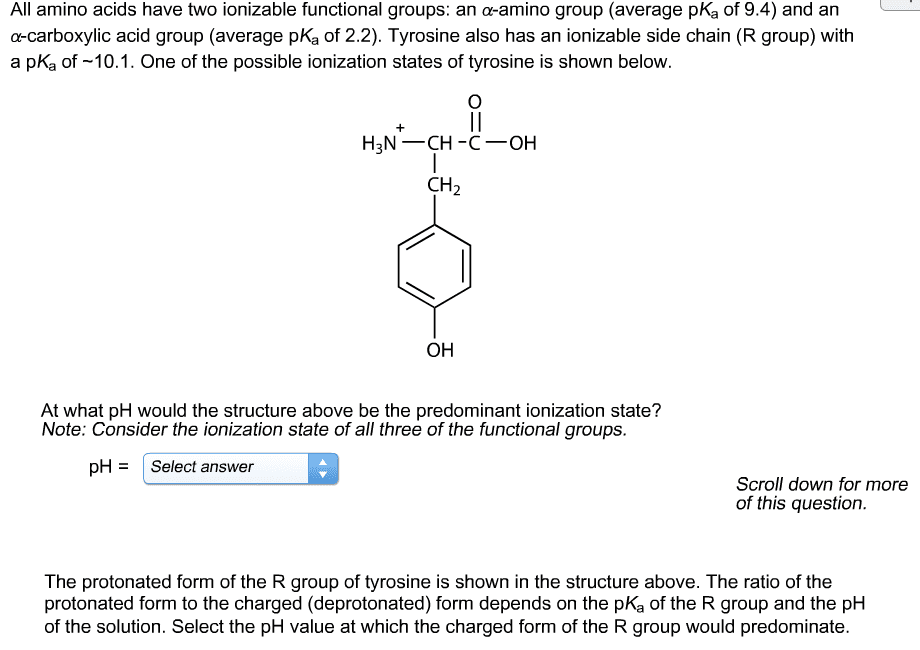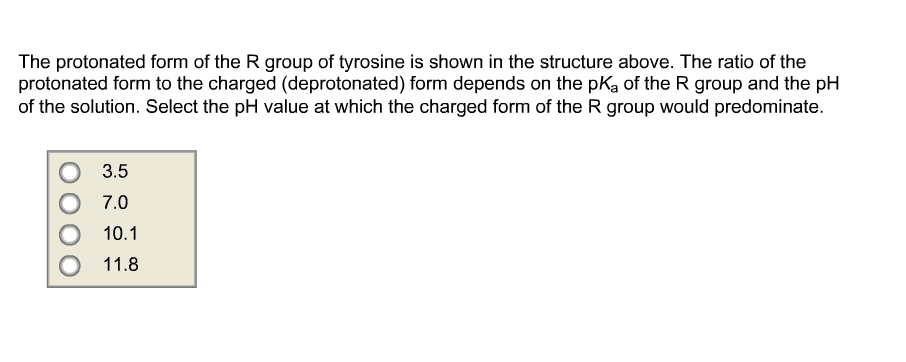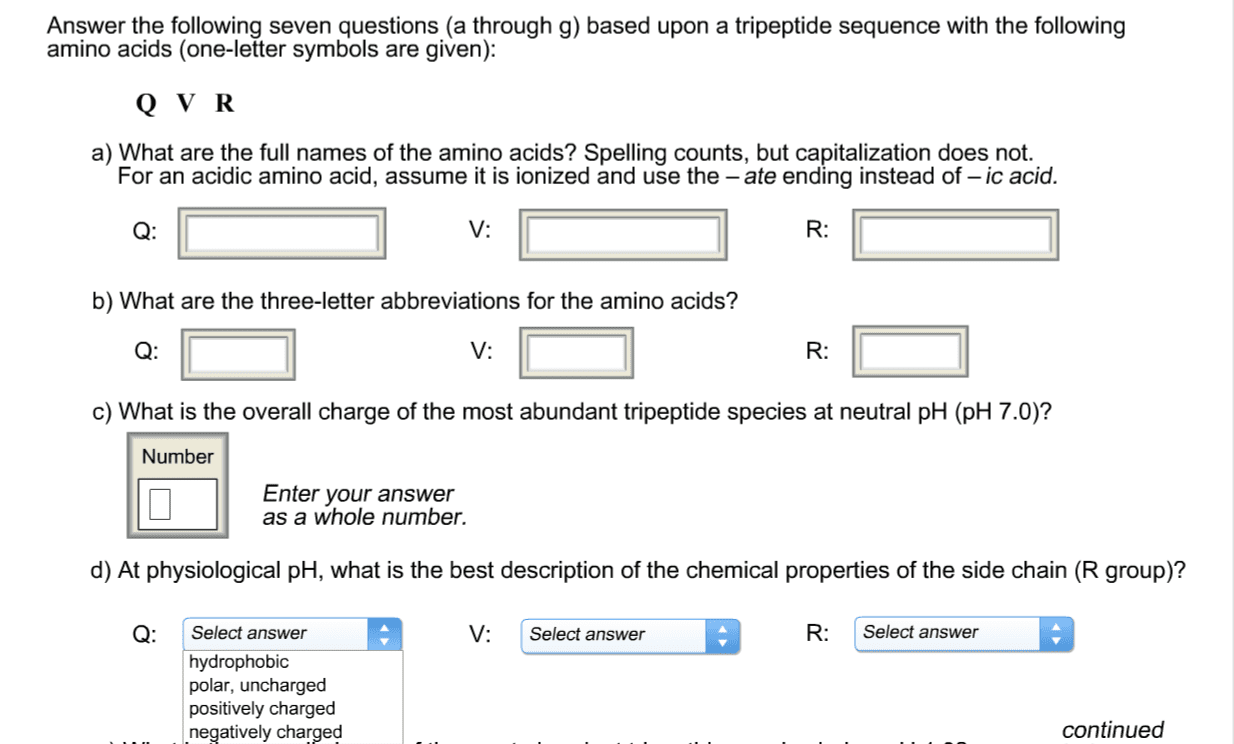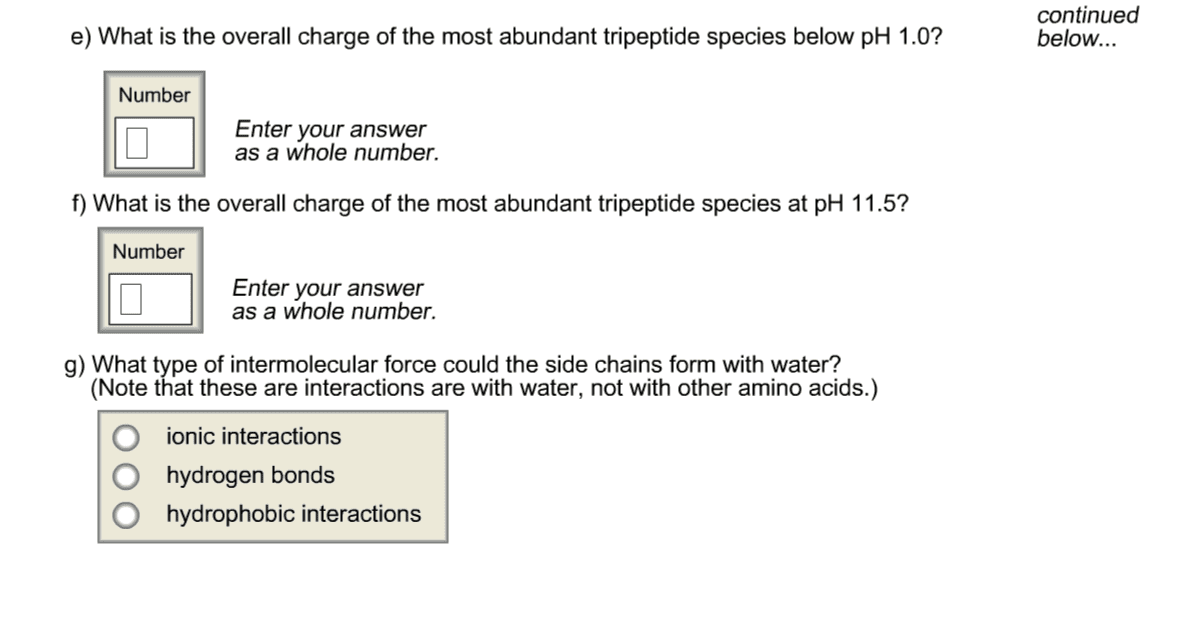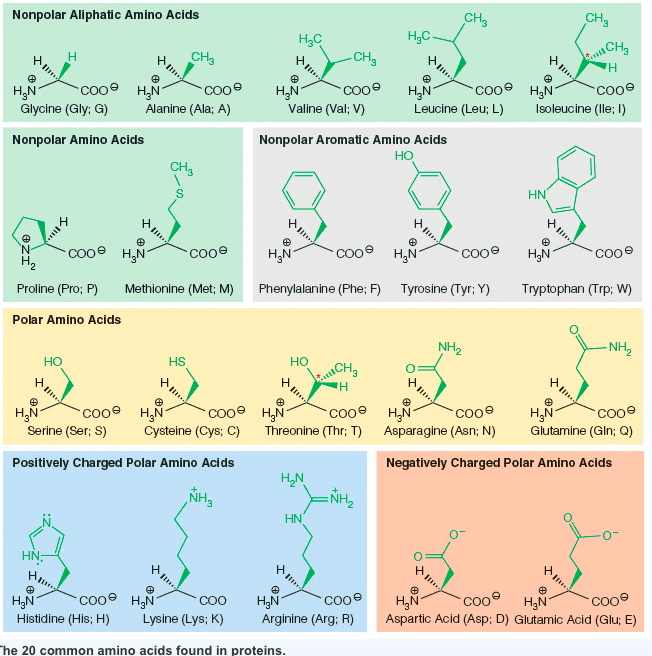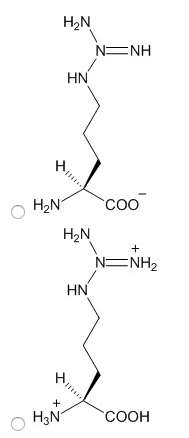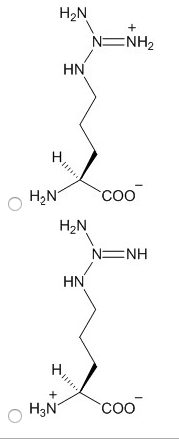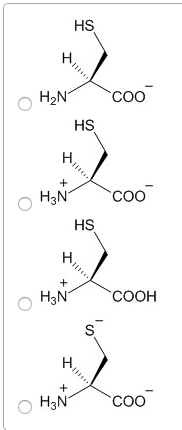CHEM1004 Study Guide - Final Guide: Isopeptide Bond, C-Terminus, Transfer Rna

TOPIC TWO: Amino Acids
General Structure of Amino Acids:
All amino acids contain an alpha carbon, alpha amino group and alpha
carboxyl group. Amino acids differ from each other in the nature of their side
chains (R). Depending on the pH, amino group of an amino acid can be:
• Protonated (NH3) and positively charged – at a medium/low pH
• Deprotonated (NH2) and neutral –at a high pH
The carboxyl group of an amino acid also differs according to pH, being either
• Protonated (COOH) and neutral – usually at a low pH
• Deprotonated (COO) and negatively charged –at a medium/high pH
At a pH between 5 and 8, amino acids exist in a Zwitterionic form, containing a
protonated amino group, deprotonated carboxyl group and therefore a net
charge of zero.
Chirality of Amino Acids:
The alpha carbon of an amino acid is considered to be chiral because it has four
different substituents (the only exception is glycine). Like all chiral molecules, it
can have 2 enantiomer forms – R and S. When dealing with amino acids, the
nomenclature of L- and D- is used, which is based on the relationship of the
amino acid chemistry to D- and L- glyceraldehyde. Most L- amino acids have an
S- configuration (the only exception is Cys) and almost all biologically
occurring amino acids are the L-enantiomer. Chirality is important because
most biological reactions are catalyzed by enzymes, containing a binding sites for
reactants in their active site. These binding sites recognize and bind specific
find more resources at oneclass.com
find more resources at oneclass.com

chemical groups on the reactants. These binding sites are positioned so that only
one enantiomer of the reactant binds correctly in the active site.
The Twenty Amino Acids:
Name
Abbreviation
Structure
Classification
Other notes
Alanine
Ala
Neutral non-
polar
-
Arginine
Arg
Basic polar
Uncharged when
deprotonated and
positively charged
when protonated
Asparagine
Asn
Neutral polar
-
Aspartic acid
Asp
Acidic polar
Carboxyl group is
uncharged when
protonated and
negatively charged
when protonated
Cysteine
Cys
Neutral
slightly polar
Has a sulphydryl
group that is
uncharged when
protonated and
negatively charged
when deprotonated
Glutamic acid
Glu
Acidic polar
Carboxyl group is
uncharged when
protonated and
negatively charged
when protonated
Glutamine
Gln
Neutral polar
-
Glycine
Gly
Neutral non-
polar
Side chain is only H
Histidine
His
Basic polar
Uncharged when
deprotonated and
positively charged
when protonated
Isoleucine
Ile
Neutral non-
polar
-
find more resources at oneclass.com
find more resources at oneclass.com
Document Summary
All amino acids contain an alpha carbon, alpha amino group and alpha carboxyl group. Amino acids differ from each other in the nature of their side chains (r). The carboxyl group of an amino acid also differs according to ph, being either. At a ph between 5 and 8, amino acids exist in a zwitterionic form, containing a protonated amino group, deprotonated carboxyl group and therefore a net charge of zero. The alpha carbon of an amino acid is considered to be chiral because it has four different substituents (the only exception is glycine). S- configuration (the only exception is cys) and almost all biologically occurring amino acids are the l-enantiomer. Chirality is important because most biological reactions are catalyzed by enzymes, containing a binding sites for reactants in their active site. These binding sites recognize and bind specific chemical groups on the reactants.

